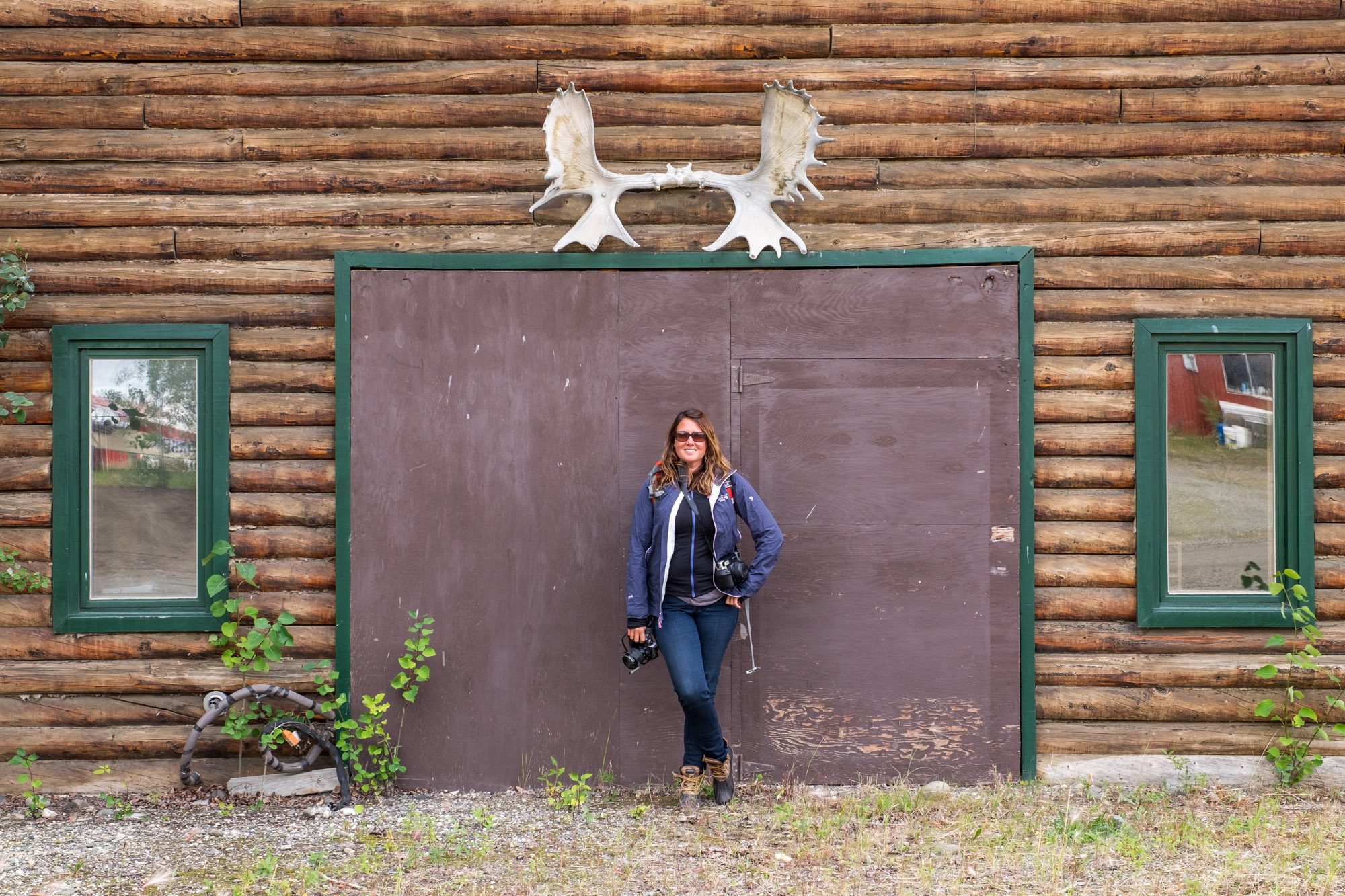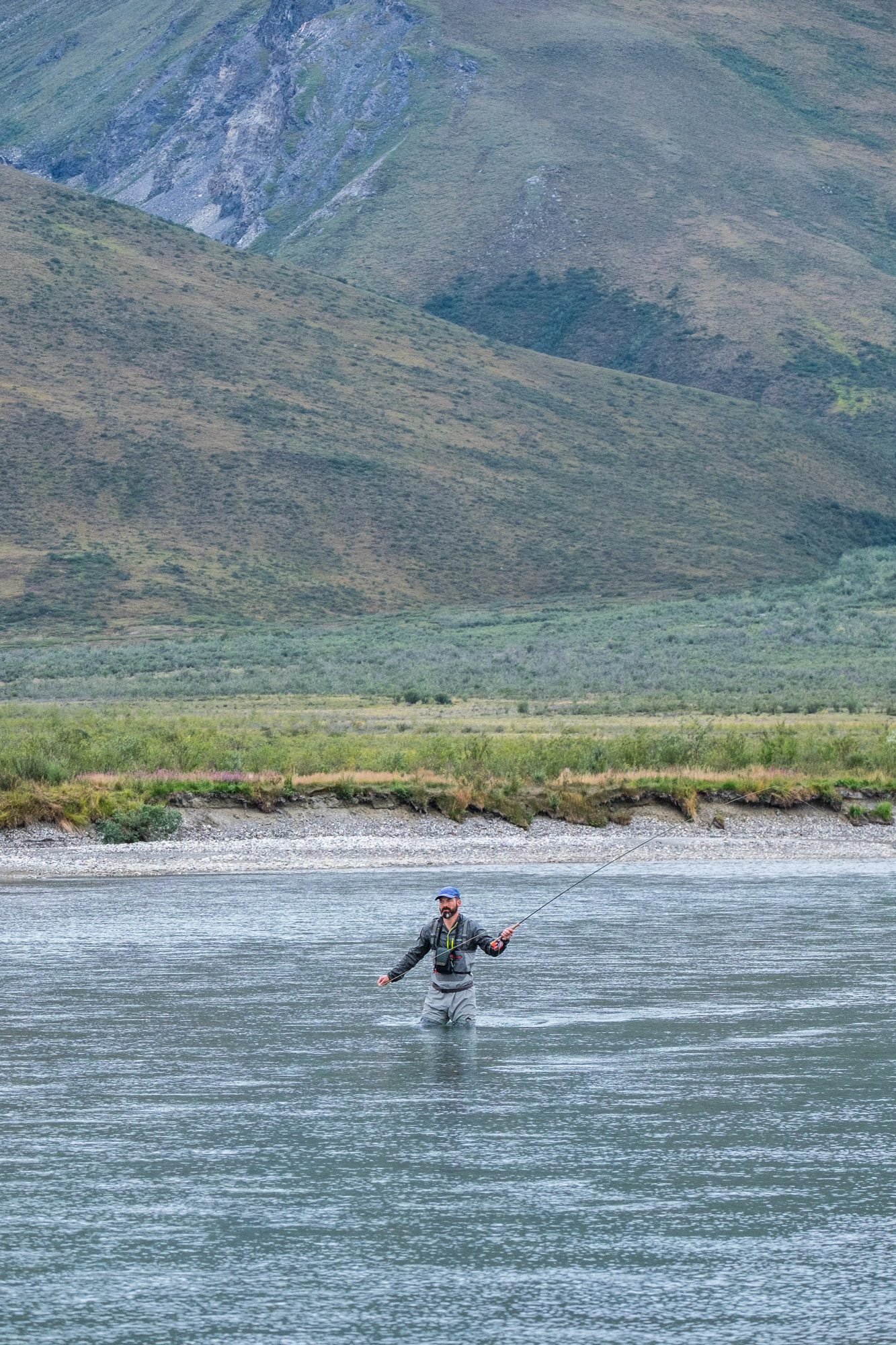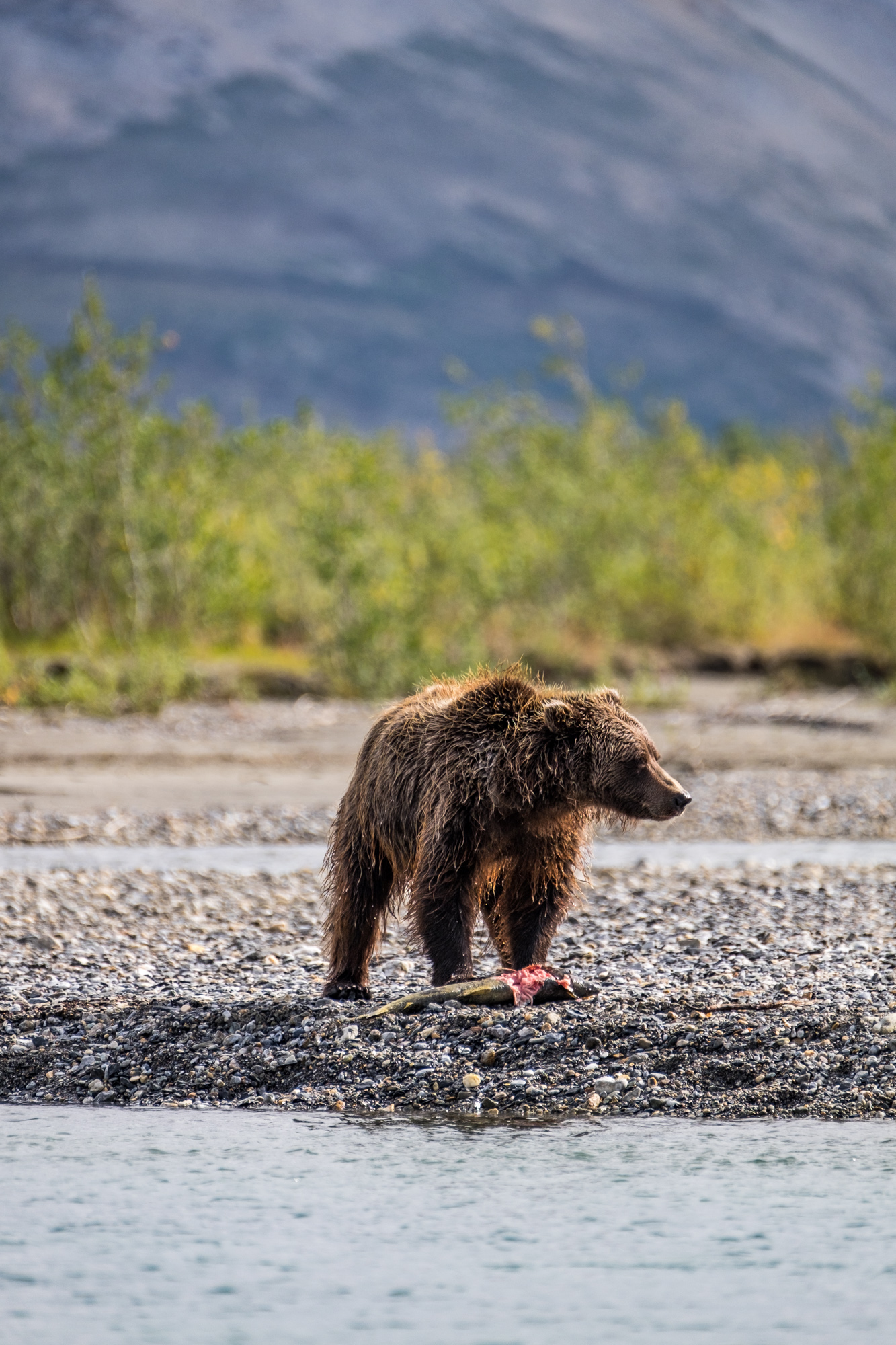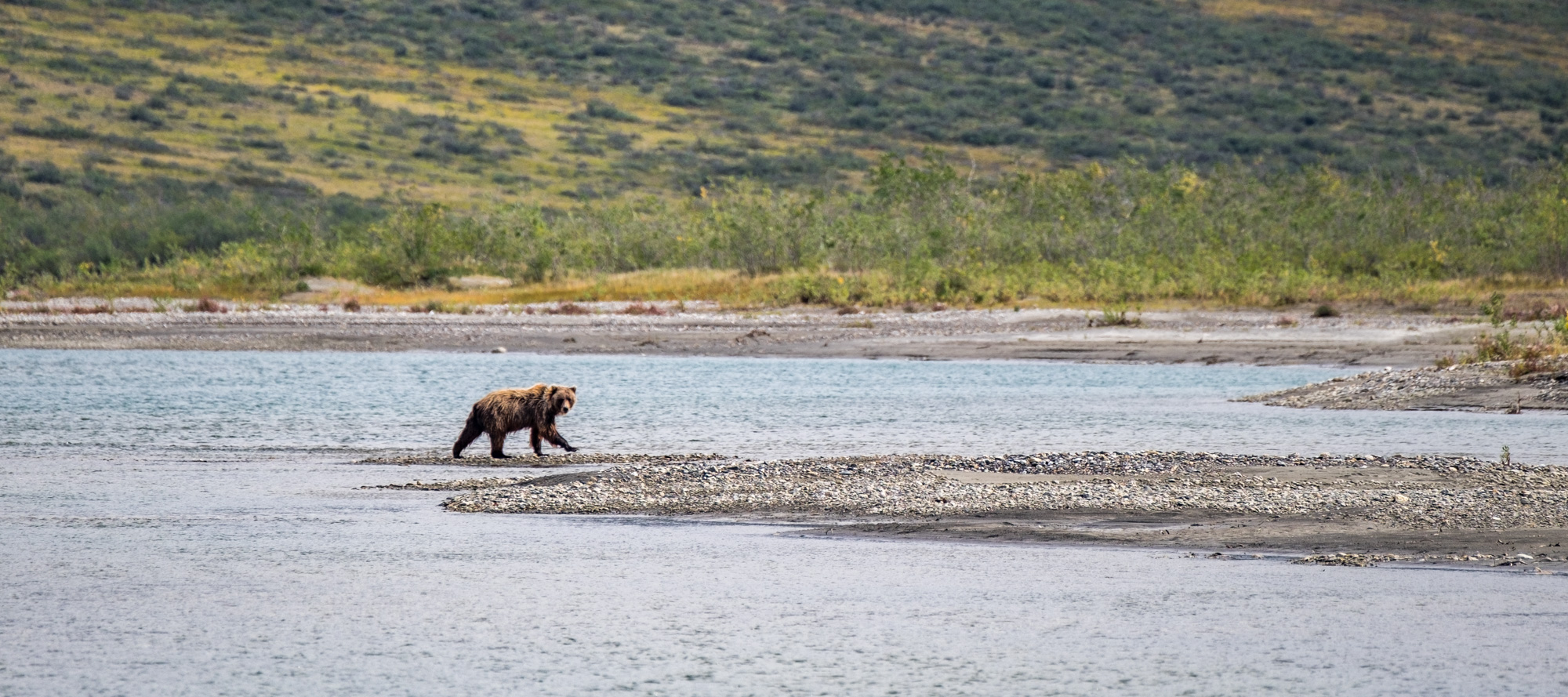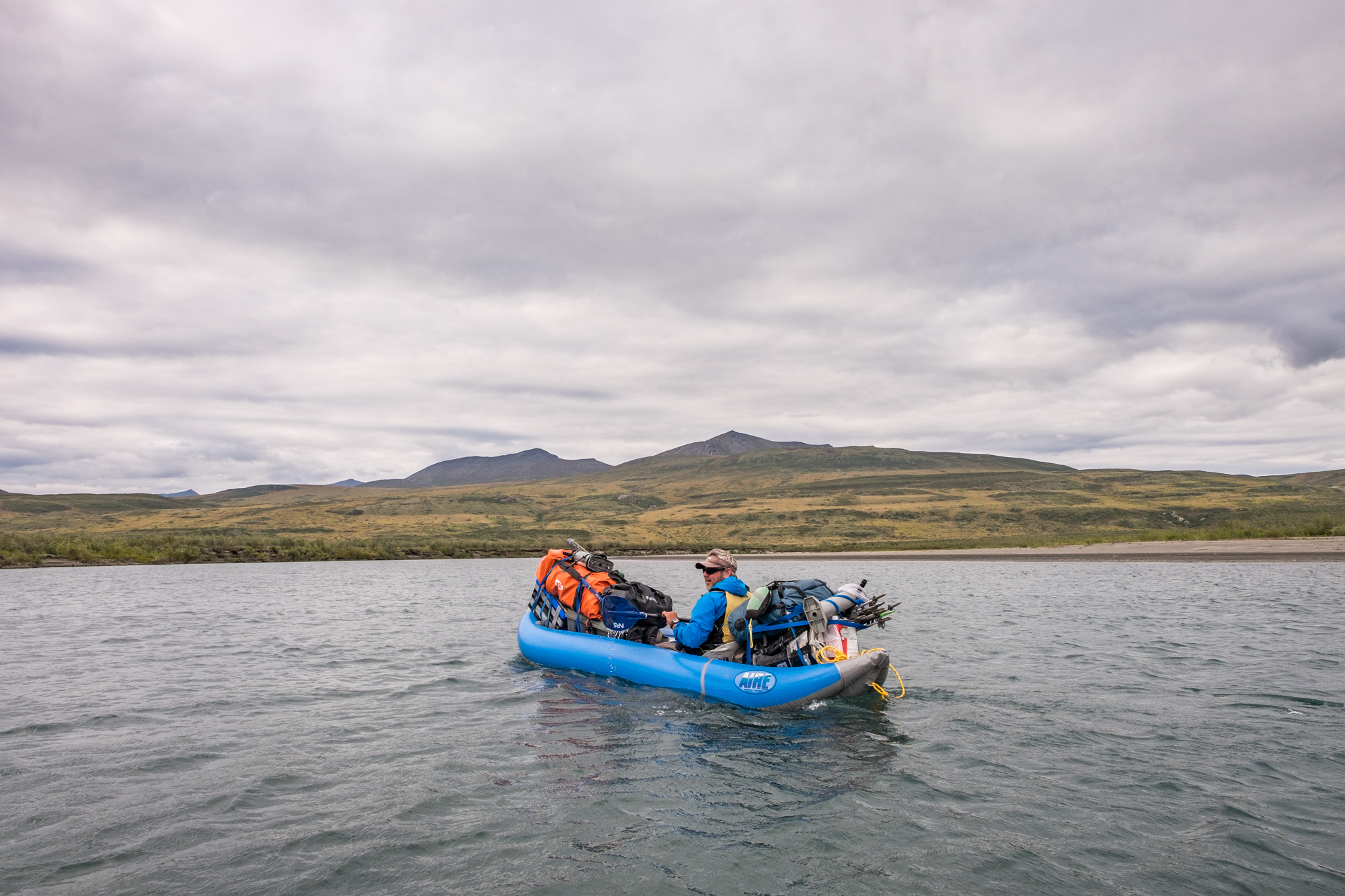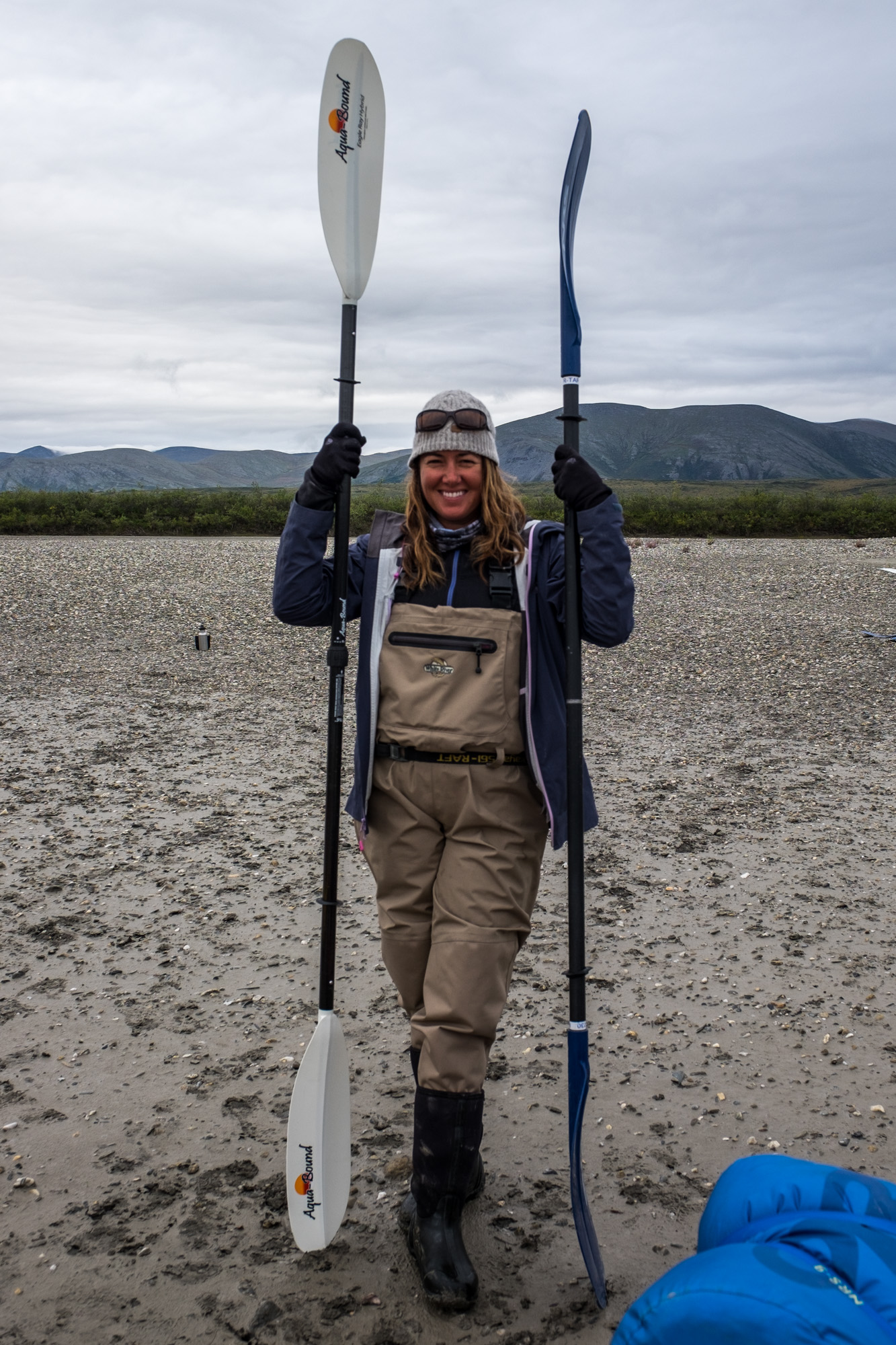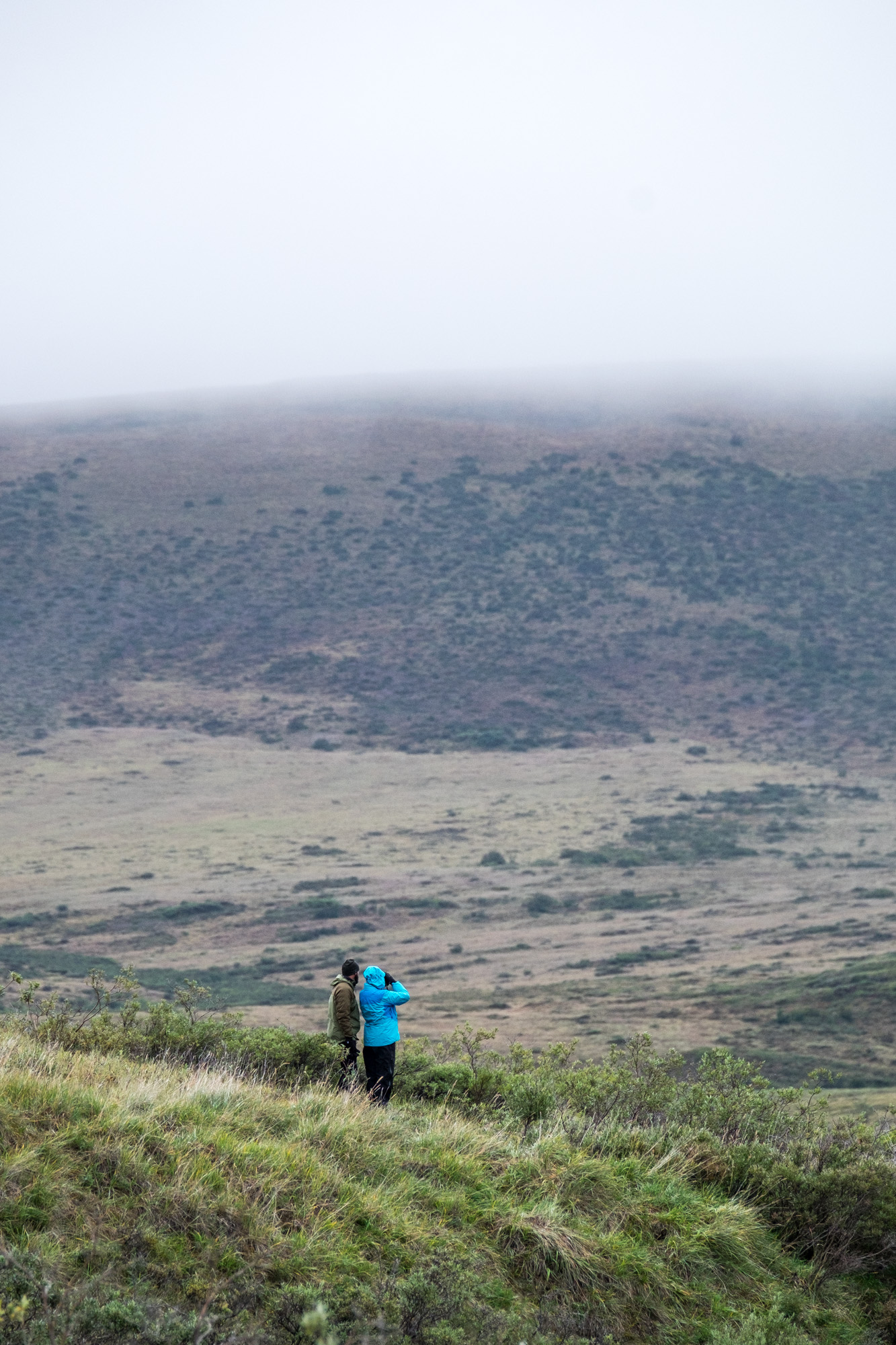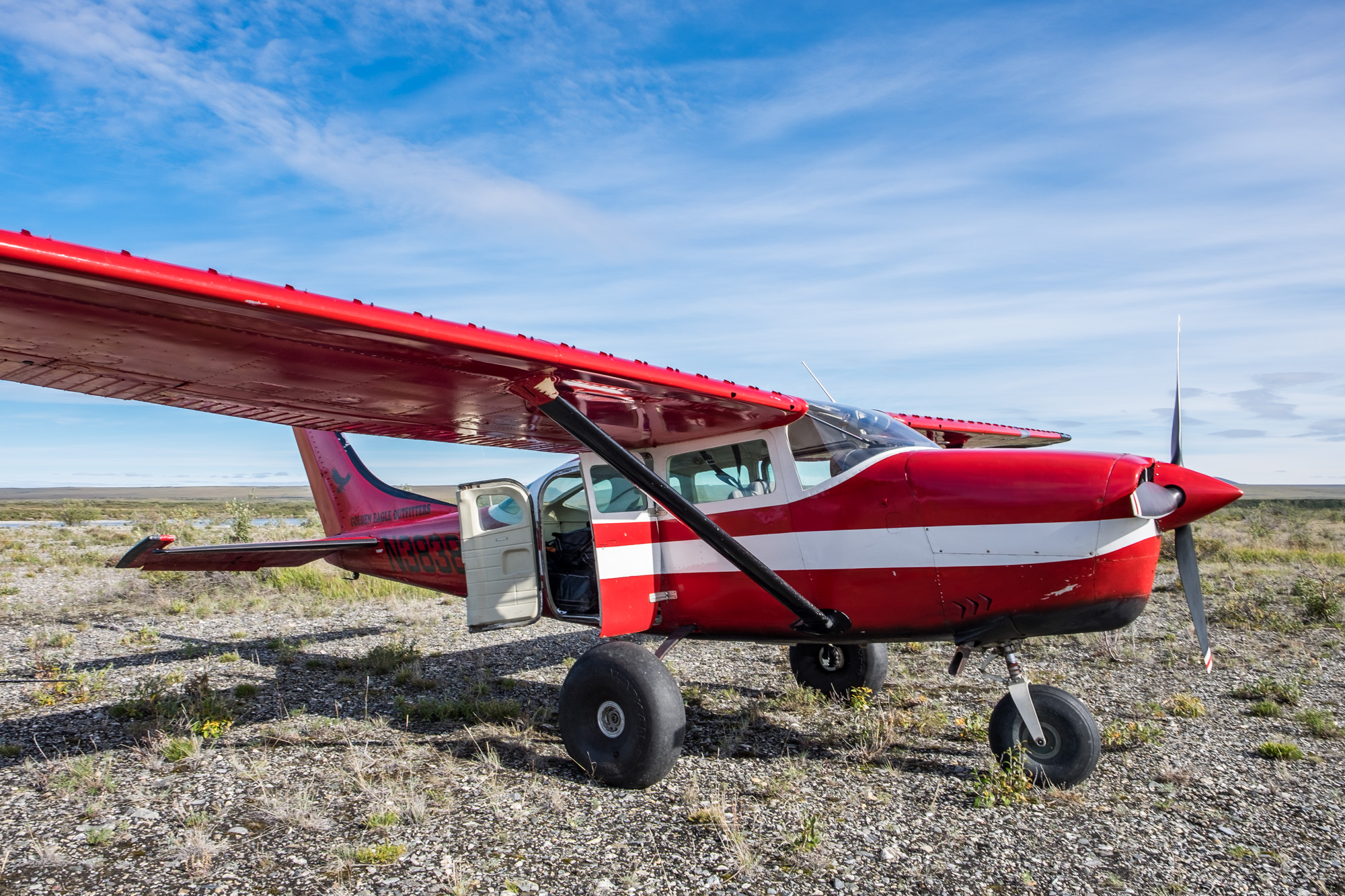Gates of the Arctic National Park & Preserve, Alaska, USA | Park 35/59
Exploration of Alaska's Wild and Scenic Rivers: Gates of the Arctic National Park
Gates of the Arctic National Park and Preserve as seen from from the air on our way into the Noatak Wilderness Preserve.
Have you ever felt that you just wanted to be somewhere completely wild? Away from services, from roads, from people, from all signs of humanity? If that sounds enchanting, you might consider planning an escape to one of Earth's last true wilderness places: Gates of the Arctic National Park and Preserve in Alaska. There are no roads into or inside of the park. There are no designated campgrounds. There are no established trails. On average, there are fewer than 50 visitors on any given day. Most landmarks found on topographic maps don't even have names. It’s a land of extreme solitude—just you and the central Brooks Range in the Arctic north.
Because of its hard-to-get-to location and all that entails, we have known throughout the duration of our project this year that exploring Gates would be one of the most difficult national parks of them all. In some ways it was, and in some ways it wasn’t. It was for sure the most expensive, and it was by far the most remote, but it was certainly not the most challenging—thanks in large part to the local guide company who helped to light our way into backcountry.
This is not a place where travelers venture unless skilled backcountry outdoorsman with exceptional survival skills. With that in mind, we signed on for a five-day backpacking and float trip down the Noatak River. Once the trip began, it took two experienced guides five days to lead ten guests down 82 miles of one mighty river in a quest to explore one of the very most remote parks in the system. Everything about it was epic.
Floating down one of six of Alaska's designated 'Wild and Scenic Rivers': the mighty Noatak!
For this article we wanted to break down the specifics of how a guided trip like this works. Taking a closer look at the mechanics of it might help you decide how to design your own trip, and/or whether or not an ultimate backcountry experience is something you even want to take on—it is really rugged out there. Even accompanied by some of the best guides in Alaska working for a company that is as experienced as anyone operating in the area, there are natural aspects of a trip like this that aren't suited for everyone. However, if you are keen to get deep into the Alaskan bush, love all-terrain camping and Mother Nature’s extreme attitude shifts, can adjust to unforeseen circumstances and can live without connectivity for some time while traveling with others whom you don’t know all that well close by your side—THIS TRIP. Seriously, this adventure remains one of the great experiences of our entire year.
A grizzly catches his dinner on the shores of the Noatak.
Onward with a look at the mechanics of a guided trip in Gates of the Arctic. This is a general idea of what-to-expect based on our experience this year—itineraries often change as do logistics.
Selecting and booking the trip – We knew we wanted to spend many days in the national park so that we could see as much of it as possible. We spent a little time researching the different experiences available in the area, and ultimately, we chose to travel with Alaska Alpine Adventures (AAA) because they have a very good reputation in the travel industry and were operating a trip that looked immersive and awesome. So we gave them a call to discuss options. Confirming that there was space enough for us (we nabbed the last two spots) we booked it then and there and they planned the majority of the rest.
Our fearless guides from Alaska Alpine Adventures, Nick and Sean, shuffle gear from the float plane to our first camp on the Noatak River.
Cost – This is the kind of guided trip that you save up for, and/or splurge on. It is a difficult undertaking to bring a group of travelers with various levels of outdoor skills safely into the Alaskan backcountry for an extended period of time. It is such a unique challenge, in fact, that there are very few companies running trips in Gates. Those companies who are operating there send their best guides, their best gear, and the area's best pilots to ensure your safety. It's pretty remarkable how much behind-the-scenes planning and coordination is constantly going on that you are free from worrying about as a guest. And having the peace of mind that your safety is their number one priority? Priceless. It is for all of those reasons that trips like the one we took aren't seen on your budget travel pages. It’s also important to factor gear cost into a trip like this. There are a variety of things you will need, and because of the unpredictable weather systems found in the Alaskan Arctic, you will want high quality equipment. Is all of that cost worth it? If you can swing it without going bankrupt, we think so, absolutely.
Inflatable Sea Tiger kayaks—our ride down the river.
Gearing up – When you book your trip, you will receive a gear list. Most of what you will need is available at REI, Bass Pro Shop, and on Amazon.com. If you are an adventurer, (and if you are heading off on a trip like this one you probably are) you probably have a lot of the gear you will need already. The company you travel with will most likely provide tents, boat gear, personal flotation devices (PFDs), paddles, etc.
Heading out – Once your trip is arranged and the date of departure arrives, you’ll fly into Fairbanks for a one-night stay at a local hotel where you will meet the group and work with the guides to flesh out your gear and make sure you have the necessary items and that everything is waterproofed. The next morning you will fly in two bush flights on float planes (seaplanes)—one to Bettles where you will rendezvous with the National Park Visitor Center and receive a briefing about park safety; then another to a remote area near the Noatak River, your water-based highway through Gates. After setting up camp, evening activities usually consist of getting to know your traveling companions over a meal and hot drinks and learning about the area and what to expect in the coming days from your guides.
The daily grind – After waking up early, eating breakfast, and gearing up, you'll hit the river in inflatable Sea Tiger kayaks and begin your multi-day voyage. Full days on the water will consist almost entirely of paddling, with stops throughout the day to stretch, eat lunch, and to watch grizzly bears in their natural habitat—awesome. During our 5-day float trip down the Noatak, we crossed 82 miles (about 16-miles per day on average) paddling from about 9 a.m. to 7 p.m.
The extraction – On this particular trip, our exit from the Noatak was a short bush flight to Kobuk Valley National Park situated nearby. Because they are near Arctic neighbors, it made sense logistically for our project to combine the two park experiences, though we’ll write about them separately (Kobuk is teed up next.) If not continuing on as we did, you will fly back to Fairbanks then on to wherever your travels might take you.
Our guides, Sean and Nick, prepare dinner for a ravenous crew at our riverside backcountry campsite.
The expected – There are no showers on a trip like this. The entire group will start to smell in unity. There are no toilets. You will dig “cat holes” (6-inch holes in the ground dug by small shovel) to do your daily deed in. Everything must be bear-proofed. Eating becomes sport. And you will experience group dynamics in a whole new way... not everybody has a good day everyday for various reasons—cameras break, gear gets damaged, people get sick, uncontrollable expectations are unmet, comfort zones reside thousands of miles away—and how individuals deal with such situations will absolutely impact everyone. It's not always pretty. That is just the nature of group travel. In the end though, and we've seen so many times while traveling on guided trips, strife eventually fades away and you will form lasting and unique bonds with the other travelers and guides because you have all experienced something amazing together.
Such a happy bunch! Fellow travelers, we will cherish our time spent with you all in Gates always!
The unexpected – Maybe your waders aren’t fully waterproofed and your feet are freezing every day while on the water. Maybe a magneto blows in your bush plane while in flight and your expert pilot lays you down on a remote lake. Maybe at that lake you meet a video crew who is creating a documentary film about stopping construction of a road through the park that will damage migratory patterns of birds, salmon and big game—and maybe amidst all of that you find yourself networking while tempering anxiety from your near-death experience… not exactly the kind of adventure you had in mind. Plainly, shit happens. It happens all the time on trips like this. Being adaptable and looking to the bright side is key to powering through unexpected situations and enjoying yourself. Once you are out there, there is no turning back, so you might as well make the best of it.
That’s the basic flow of a guided backpacking and float trip down the Noatak River in Alaska’s Brooks Range. All in all, we had no proper showers, zero broken bones, hiked 20-something miles, flew four bush flights, had 23 bear encounters, spotted 12 bird species (thanks to our new friends, the bird ninjas!); consumed about 1 zillion calories, and endured 10 days of non-stop laughter—people can be very funny when you take away all of the typical distractions of life and plop them down into the wilderness together somewhere. Epic trip, and an experience we’ll cherish forever.
Join us for a one-minute float down the Noatak River!
Quotable Images
Fact Box
8.5 million acres | America's 2nd largest national park
Official name: Gates of the Arctic National Park and Preserve
Date established: December 2, 1980
You might be starting to notice as we publish our Alaska park pages that all of them were established on December 20, 1980. While many of them were established as National Monuments throughout the 20th century, it was the Alaska National Interest Lands Conservation Act that was signed into law by President Jimmy Carter that elevated them to National Park status on this date in 1980.
Location: Northern Alaska, in the central Brooks Range
How to get there: There are only two ways into the park—touching down in a bush plane or walking in on foot—after that, you are on your own! Visit the National Park Service website for Gates of the Arctic for more information.
How the park got its name: The park was given its name by a U.S. Forest Service forester named Robert "Bob" Marshall who regularly visited the North Fork Koyukuk country between 1929 and 1939. When he dubbed the area “Gates of the Arctic” he was referring to two mountain peaks—Frigid Crags and Boreal Mountain, the so called “Gates” from the Brooks Range into the northern Arctic.
Iconic site in the park: Most landmarks found on topographic maps of the park don't even have names. This isn't a park known for its established landmarks, but an untrammeled and nuanced wilderness expanse in interior Alaska. Aside from the mighty Noatak River, the most iconic landmark of them all is the one that bares the park's namesake—The Gates of the Arctic—a geological formation in the form of two mountain peaks (Frigid Crags and Boreal Mountain) that stand on the east side of the park opening up to the great white north.
Accessible adventure: The easiest way to explore Gates of the Arctic is to touch down by bush plane in the small town of Bettles located 35 miles north of the Arctic Circle—the jumping off point to the Noatak, Gates, Kobuk, and Brooks wilderness’ where you can backpack, paddle, hike, fish, and photograph the pristine untouched nature of northern Alaska during the summer; and where you can have your moment with the unforgettable Northern Lights during the late fall and winter. Bettles is also home to the Gates of the Arctic National Park Visitor Center where you can stamp your park passport and talk to park rangers about the northernmost national park in the United States. There are a couple of lodging options in Bettles, most notably is the Bettles Lodge, a National Historic Site.
Floating down the Noatak River on a 5-day paddle and backpacking trip through Gates of the Arctic with Alaska Alpine Adventures.
Big adventure: We can’t think of a more fulfilling ‘Big Adventure’ than a 5-day float trip down the Noatak River. In a relatively short amount of time you will see the diverse ecosystems that make up the Brooks Range while challenging your body and mind the entire way. On any given day on the river, the wilderness will open up to you to reveal wildlife including grizzly bears and caribou, and precious birdlife including the golden eagle and arctic warbler. At night you will lay your head down in the Arctic wilderness under starry skies that twinkle ever so brightly without the obstruction of light pollution. Perhaps the most wonderful thing about a multi-day adventure in Gates is the high likelihood that you won’t see another soul during your entire time there other than those with whom you travel. This is one of the best ways into a world that is as pristine as any that exists on our planet.
Did you know…
Gates of the Arctic is the northernmost national park in the U.S., it lies entirely above the Arctic Circle.
It is the second largest national park behind Wrangell St. Elias National Park and Preserve located in southeastern Alaska.
The Brooks Range where Gates of the Arctic is located is one of Earth's northernmost mountain ranges.
The philosophical mandate for Gates of the Arctic National Park (in accordance with the Alaska National Interest Lands Conservation Act) is that it 'maintains the wild and undeveloped character of the area, including opportunities for visitors to experience solitude, and the natural environmental integrity and scenic beauty of the mountains, forelands, rivers, lakes, and other natural features; ...to provide continued opportunities, including reasonable access, for mountain climbing, mountaineering, and other wilderness recreational activities; ...and to protect habitat for and the populations of, fish and wildlife, including, but not limited to, caribou, grizzly bears, Dall's sheep, moose, wolves, and raptorial birds; ...and that 'subsistence uses by local residents shall be permitted in the park, were such uses are traditional.'
Ten subsistence communities still live in Gates in a way that their eastern Siberian ancestors did 10,000 years ago. There are several Eskimo tribes still living in the area, as well as natives of the Koyukan tribes.
A map and a compass are your best friends while exploring Gates.
There are no supplies in the park and help once out there is days away. You must bring with you everything you might need during your journey, including backcountry wilderness survival skills. Don't let this turn you off from exploring Gates if you think your skills aren't up to snuff, just seek out help from a guide operator and/or local lodge owner in or near the park. The park is located just five miles west of the Dalton Highway, so technically you can hike in relatively easily. But as there are no roads, trails, services, or any other signs of life in this very remote national park, you are virtually on your own. If you opt to go this route, study up on the Gates of the Arctic Travel Planning Packet found on the official park website and always check in with the Park Service at the Bettles Visitor Center in advance of your trip.
The wild wilderness in Gates of the Arctic!
Backpacking is unrestricted—you can venture off into the wilderness to your heart's delight! According to the National Park Service, backpackers often complete only five miles per day, a far cry from what they are typically able to do in regions without extreme and unpredictable weather, dense alder terrain, and other obstacles that can arise for any reason at all in an area like the Brooks Range. Backpackers assume all risk when heading off into backcountry. It seems like we can't express this enough but it seems like a very important point to make.
Backcountry campers are encouraged to camp on gravel bars and beaches to protect from the wears of erosion, while benefiting from added protection from ruthless mosquitos, flies and gnats that like to nest in the tundra.
What about the weather? It can be as cold as -40 degrees Fahrenheit in December, and as warm as 70 degrees Fahrenheit in the summer in Bettles. One of our guides told us that he experienced both his hottest and coldest weather days in this area of Alaska on the same trip. Aside from the norm, weather can be completely unpredictable thus altering the entire environmental system. High winds can affect air travel; high water levels can affect river crossings... The moral of the story is this: you never know what you are going to get. Alaskan locals don't trust weather reports—they just look outside then plan their next move based on what they see.
The Arrigetch Peaks are considered to be one of the most beautiful areas in the park, leaving photographers clamoring to capture the beauty of the tilted intrusion that forms the jagged high granite peaks of the Arrigetch, which means “fingers of the hand extended” in native Eskimo.
The Noatak River is 330-miles (530km) of wild water stretching from the Kelly River to the Noatak National Preserve. It is protected by the National Wild and Scenic Rivers System and is one of six in Alaska earning that designation. The other five are the Alatna, John, Kobuk, North Fork Koyakuk, and the Tinayguk.
Gates has a well-known caribou migration that occurs each year during spring and autumn. For the Inupiat and the Eskimo natives who have survived in the area, the caribou have provided food, shelter, clothing, and transportation for millennia. No part of the animal goes unused, tendons are turned into fishing nets and laces; bones into tools and decorative jewelry worn by both men and women.
Our buddy Nathan, a Montana-based fly-fisherman with a beautiful cast, spent his lunch breaks pulling up catches instead of eating.
Common wildlife in Gates of the Arctic includes: grizzly bear, wolves, muskox, caribou, moose, wolverine, fox, Dall sheep and birdlife. Fish species include grayling, dolly varden trout, arctic char, and chum salmon—it is a sport fisherman's dream out there!
Grizzly cubs curiously watch us paddle by.
Bears are active at all times, in all weather, day and night in Gates of the Arctic. Being alert and aware of your surroundings is mandatory while traveling anywhere in the Alaska backcountry and Gates is no exception. During our five day float trip, we saw 23 bears. That is a lot of bear-awareness! Read more about what to do and expect while traveling in bear country in our comprehensive article, Bear 101: Exploring and Staying Safe in American Bear Country.
While many backpackers carry bear spray or a firearm for protection from bears in this area, attacks on humans are rare. The bear population there sees humans so scarcely that they appear to be more curious than they are aggressive. It is considered to be quite rare to see a bear in Gates that is habituated to humans (a catalyst for aggression.)
Mosquitos and flies can be so bad during the summer that multiple forms of bug protection are recommended for travelers, including bug spray with deet, bug nets, long sleeved shirts and pants, and a good sense of humor. Truthfully, they weren't bad enough while we were there to warrant wearing a bug net over our head and face, but we were glad that we had them because annoyance levels were teetering right on the edge.
Black Spruce trees cover the landscape across the great state of Alaska. The tips make a fine cup of herbal tea. They are also a secret weapon in Alaska beer brewing and were notably consumed by Captain Cook’s fleet when he tried to rid a wave a scurvy that hit his men while traversing New Zealand in 1773. The medicinal method was first theorized by French explorer Jacque Carter in the 14th century. Author Jane Austen wrote of Spruce Beer in her novel Emma. Benjamin Franklin had a recipe of his own. Today, some small batch craft brew companies are effecting a resurgence of Spruce Beer.
We were welcomed with homestead hospitality at the Iniakuk Lodge in remote Gates after our plane made an emergency landing off of their property. We are forever grateful for their kindness in an otherwise dark moment!
The Road to Ambler is an effort to develop a transportation corridor to the Ambler Mining District from the Dalton Highway just east of the park. If it is built, it will cross through Gates of the Arctic National Park. Truthfully, we wouldn’t have known anything about it had our plane not malfunctioned in a remote part of the path to our starting point of our float trip in Gates, marooning us alongside a team of filmmakers and explorers intent on raising awareness to the Road to Ambler's development and hopefully, putting a stop to its development. The idea of a road disrupting this outstanding wilderness is upsetting enough that it makes us want to share their story. Learn more at www.pavingtundra.com.
There are no bathrooms in Gates of the Arctic and as such, most people have questions about doing the number two... simply put, you dig a hole and you go outside. Slang terms for this act include: “going to pick flowers” using the “facili-trees” and "doing the wilderness walk of shame"—three phrases that can stand in for “please hand me the poop kit.”
Happy trails everyone!
'Safeguarding the Character of Our Nation's Unique Rivers'
The Noatak River which we described throughout this page has a special designation among rivers in America. In that spirit, we wanted to share this passage from rivers.gov:
The National Wild and Scenic Rivers System was created by Congress in 1968 (Public Law 90-542; 16 U.S.C. 1271 et seq.) to preserve certain rivers with outstanding natural, cultural, and recreational values in a free-flowing condition for the enjoyment of present and future generations. The Act is notable for safeguarding the special character of these rivers, while also recognizing the potential for their appropriate use and development. It encourages river management that crosses political boundaries and promotes public participation in developing goals for river protection.
It is hereby declared to be the policy of the United States that certain selected rivers of the Nation which, with their immediate environments, possess outstandingly remarkable scenic, recreational, geologic, fish and wildlife, historic, cultural or other similar values, shall be preserved in free-flowing condition, and that they and their immediate environments shall be protected for the benefit and enjoyment of present and future generations. The Congress declares that the established national policy of dams and other construction at appropriate sections of the rivers of the United States needs to be complemented by a policy that would preserve other selected rivers or sections thereof in their free-flowing condition to protect the water quality of such rivers and to fulfill other vital national conservation purposes. (Wild & Scenic Rivers Act, October 2, 1968)
